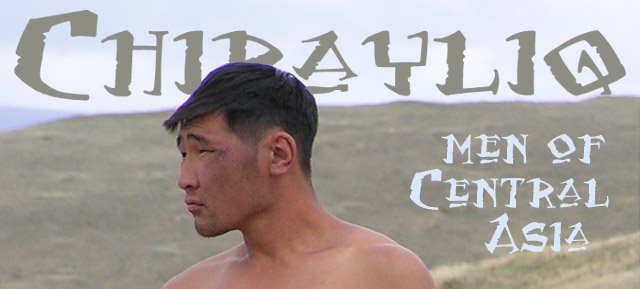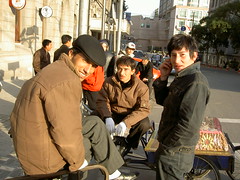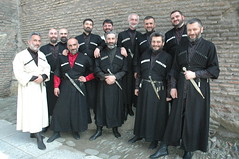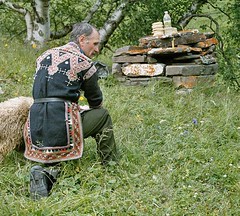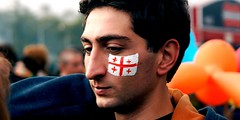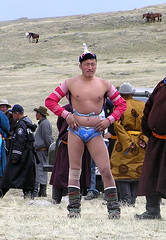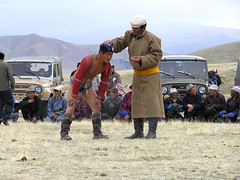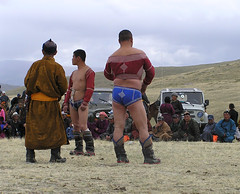The following is an excerpt from an essay I wrote during my studies of Russian cultural history – “Persons of Caucasian Nationality” – Xenophobia and Imperialism in Russia. You can read the full text here in Swedish (and Russian). Note: Of course, with "Caucasians" I will be referring to people from the Caucasus Region, and not the US-American label for "white" people.
 In the last decades of the Soviet Union, there was one very popular stereotype about people from the Caucasus region. It was born after Stalin’s death and the following more relaxed approach to his legacy. Now, people were finally able to openly tell anecdotes about Stalin, where he often appeared as a womanizer.
In the last decades of the Soviet Union, there was one very popular stereotype about people from the Caucasus region. It was born after Stalin’s death and the following more relaxed approach to his legacy. Now, people were finally able to openly tell anecdotes about Stalin, where he often appeared as a womanizer.
In the mid-1960’s, the image of “the Georgian gigolo from the Black Sea coast” was becoming widespread. Stalin’s ethnic background, and the fact that many popular holiday resorts located on the Black Sea coast were in Georgia, led to this stereotype being projected primarily on Georgians, although it was applied also on all other Caucasian nationalities.
“The Georgian gigolo” appeared not least in anecdotes:
A foreign woman asks a Georgian: “Sprechen Sie deutsch?” – “Of course I want to!” he answers with a willing smile. (Tsutsiev 1998, part 1.3 – my translation)
 He also appeared in contemporary fiction. In the short story To tell or not to tell by Viktoria Tokareva, the heroine Artamonova has a short-lived affair with the Georgian Vakhtang, who has a difficult time working as an actor, because he is “too beautiful”.
He also appeared in contemporary fiction. In the short story To tell or not to tell by Viktoria Tokareva, the heroine Artamonova has a short-lived affair with the Georgian Vakhtang, who has a difficult time working as an actor, because he is “too beautiful”.
Artamonova understood: he needed to change his profession. For instance, he could be a paid lover in the West at expensive hotels. But how can you tell a man something like that? (Tokareva 2000 – my translation)
Soviet women liked the attractive and friendly “Georgians” they met on their seaside holidays, while Soviet men quite often experienced an inferiority complex towards their southern rivals. It was – and it is still – a common conception that Caucasian men possess extreme abilities in the sexual field (a stereotype that is eagerly confirmed by some Caucasian men, according to my interviews with Natig Jafarov from Azerbaijan, 2001–2003). Seifali Akhundov writes in the article The Caucasian and the woman, the woman and the Caucasian:
 A long, long time ago on the street in winter, a drunk proletarian stopped me and unexpectedly asked: “Is it true that you people (from the Caucasus, he meant – S.A.) don’t have a straight one, but a bent one?” Of course, I didn’t care to answer him, but the nature of the question intrigued me. Firstly, I thought back then that the form and size of the reproductive organ do not depend on ethnic background. Secondly, as I assumed later, this question was rather of a rhetoric character and, probably, bore witness of an inferiority complex towards Caucasians, as experienced by some Russian men, mainly thanks to the myths about the incredible masculine power of Caucasians. In this case, an out-of-the-ordinary form of the organ was seen as one advantage. (Akhundov & Pishchikova 2001 – my translation)
A long, long time ago on the street in winter, a drunk proletarian stopped me and unexpectedly asked: “Is it true that you people (from the Caucasus, he meant – S.A.) don’t have a straight one, but a bent one?” Of course, I didn’t care to answer him, but the nature of the question intrigued me. Firstly, I thought back then that the form and size of the reproductive organ do not depend on ethnic background. Secondly, as I assumed later, this question was rather of a rhetoric character and, probably, bore witness of an inferiority complex towards Caucasians, as experienced by some Russian men, mainly thanks to the myths about the incredible masculine power of Caucasians. In this case, an out-of-the-ordinary form of the organ was seen as one advantage. (Akhundov & Pishchikova 2001 – my translation)
Another stereotype that slowly developed during the same period, and often became blurred with ”the gigolo” is ”the market trader Georgian”. This stereotype was of an even more malicious character.
Like a broken, quarrelsome twig on the human tree, he sticks out on all the Russian markets, from Murmansk to Norilsk, disrespectfully swindling the unsuspecting northern people … Greedy, illiterate, of those who in Russia pejoratively are called “soul worth a kopeika [the smallest unit of Russian money]”, everywhere he throws away all restraint, everywhere with pockets wide open, money shiny from unwashed hands, everywhere he tosses money … (Viktor Astafjev, Catching Gudgeons in Georgia, cited by Tsutsiev 1998, part 1.4)
 One example where the stereotypes of ”the gigolo” and ”the market trader” are combined – as two sides of one coin – can be found in Yulia Voznesenskaya’s The Ladies’ Decamerone. The novel tells about ten Soviet women of various backgrounds, who in the spirit of Boccaccio in the course of ten days tell each other stories under different topics. Certainly, when the topic of “first love” comes up, the holiday romance of a young girl at the Black Sea can't be missing – which, however, meets its tragic end at the hands of a jealous rival:
One example where the stereotypes of ”the gigolo” and ”the market trader” are combined – as two sides of one coin – can be found in Yulia Voznesenskaya’s The Ladies’ Decamerone. The novel tells about ten Soviet women of various backgrounds, who in the spirit of Boccaccio in the course of ten days tell each other stories under different topics. Certainly, when the topic of “first love” comes up, the holiday romance of a young girl at the Black Sea can't be missing – which, however, meets its tragic end at the hands of a jealous rival:
“Well, did you come to your senses yet? Have you understood that he isn’t suitable for you? You realise, don’t you, that your parents would never allow you to marry a Georgian who can hardly read and write. Just you wait, one day you’ll see him standing at the market selling tangerines and mimosa!”
That thought really made me blush. Because we were brought up to regard all trade, and especially market trade, as the most unsuitable – yes, shameful! – business that anyone could engage in. (Voznesenskaya 1985, p. 29 – my translation)
…
In the early 1990’s, anti-Semitism seemed to be the most widespread form of racism in post-Soviet Russia. But in the growing wave of xenophobia it would soon prove to be “persons of Caucasian nationality” who were subject to the worst form of discrimination and the most of the racist slurs. The antipathies that earlier had found their expression in the stereotypes of “the market trader Georgian” have since the wars in Chechnya virtually exploded in the stereotypes about “the Chechen terrorist”.
---------------------------
Illustrations:
1. A random Georgian from the gallery of nukri.org, by the user VAKISPARKI.
2. Another random Georgian from nukri.org, by the user Kolxi.
3. Cover of the record “A Georgian is waiting for you” by mushy Georgian-Russian singer Soso Pavliashvili, who plays with Russian stereotypes about Georgians.
4. “I'm Georgian!” - a picture that can be seen randomly posted in Russian discussion forums. This elephant seal's nose apparently has a likeness to the racist stereotype of Georgians. Interestingly enough, this nose shape is also an inherent trait of typical racist caricatures of Jews.
References:
Akhundov & Pishchikova 2001 = Ахундов, Сейфали и Пищикова, Евгения: Кавказец и женщина, женщина и кавказец, pseudology.org 2001
Tokareva 2000 = Токарева, Виктория: “Сказать, не сказать”, Будет другое лето, Вагриус, Москва 2000
Tsutsiev 1998 = Цуциев, Артур: Русские и кавказцы – очерк незеркальной неприязни, Вестник IC I, Владикавказ 1998 (offline?)
Voznesenskaya 1985 = Voznesenskaja, Julia: Kvinnornas decamerone, Bokförlaget Alba, Malmö 1987
 The guy that goes under the nick "V101" at absoluteagency.com is 18 years old and from Izhevsk (Udmurt Republic), Russia. As can be seen in his other pictures, he has green or grey eyes and fairly "Asiatic" features.
The guy that goes under the nick "V101" at absoluteagency.com is 18 years old and from Izhevsk (Udmurt Republic), Russia. As can be seen in his other pictures, he has green or grey eyes and fairly "Asiatic" features.